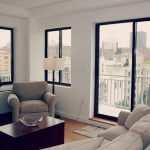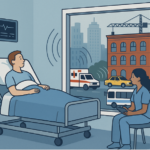NYC Office Space Conversion
Unused Office Spaces in NYC
It is no secret that the Covid-19 pandemic completely altered everyone’s way of life. New York City, specifically, experienced unprecedented changes in how the city functions. One such change is the shift in the need and use of office space throughout the city.
According to a report by the real estate services firm Cushman & Wakefield, the vacancy rate for office space in Manhattan reached 15.5% at the end of the second quarter of 2021, the highest level in over a decade. The report attributed the rise in vacancy rates to the COVID-19 pandemic and the resulting remote work trend, which has led many companies to reconsider their real estate needs.
The report also notes that the availability of sublease space has risen sharply in recent months, as companies that signed leases for more space than they now require look to sublet the excess space to other firms. In fact, the amount of sublease space on the market in Manhattan hit a record high of 23.5 million square feet in the second quarter of 2021.
In addition, the Cushman & Wakefield report highlights the fact that the amount of office space under construction in Manhattan has slowed significantly in the wake of the pandemic. According to the report, just 5.9 million square feet of new office space is currently under construction in Manhattan, the lowest level in over a decade.
This data is for Manhattan specifically, but these figures suggest a surplus of unused office space within the city. This trend continues into 2022 and 2023 as many companies look to adopt a hybrid model of remote and on-person work, at the least.
Housing and Residential Needs in NYC
The estimated population of New York City in 2023 is nearly 9 million people, making it the most populous city in the United States and one of the most densely populated cities in the world.
Here are some additional quick statistics about the housing market within NYC:
- Housing Affordability: Housing affordability is a major issue in New York City, particularly for low- and middle-income residents. According to a report by the Citizens Budget Commission, approximately 40% of New York City households spend more than 30% of their income on housing, which is considered the standard measure of affordability. In addition, roughly 20% of households spend more than 50% of their income on housing, which is considered severely cost-burdened.
- Homelessness: Homelessness is also a significant issue in New York City. According to a report by the Coalition for the Homeless, as of January 2021, there were approximately 56,000 people experiencing homelessness in New York City, including roughly 15,000 homeless families with children.
- New Housing Construction: Despite the high demand for affordable housing in the city, the rate of new construction has been relatively slow in recent years. According to a report by the New York City Comptroller’s Office, the number of new housing units authorized for construction in the city decreased by approximately 8% in 2019, with a total of just over 24,000 units authorized for construction.
- Aging Housing Stock: The aging housing stock in New York City is also a concern, particularly with regard to the city’s large number of rent-stabilized and rent-controlled units. According to a report by the New York City Independent Budget Office, over half of the city’s rental units were built before 1947, and many of these units are in need of significant repairs and upgrades.
Overall, these statistics and trends suggest that housing and residential needs continue to be a major challenge in New York City, particularly with regard to affordability and homelessness.
Unused Office Spaces in NYC to be Converted to Residential Living Spaces
Considering the information above, a smart movement has been emerging within the NYC real estate landscape. There has been a growing trend in recent years to convert unused office spaces into residential living spaces in New York City. This trend has been driven in part by the high demand for housing in the city and the increasing availability of underutilized office space due to the rise of remote work and the pandemic, as outlined above.
One major example of this trend is the conversion of the former headquarters of the New York Times at 229 West 43rd Street into a mixed-use development with both office and residential components. The building, which was designed by renowned architect Renzo Piano, is being converted into luxury apartments, with amenities including a rooftop pool, fitness center, and concierge service.
Another example is the conversion of the former Verizon building at 140 West Street in Lower Manhattan into a mixed-use development that includes both office and residential space. The building, which was designed by architect Ralph Walker in the 1920s, is being converted into 475 rental apartments, with amenities including a rooftop terrace, fitness center, and pet spa.
In addition to these high-profile conversions, there are many smaller-scale projects underway throughout the city to convert unused office space into residential use. Some of these projects are being undertaken by individual property owners, while others are being led by developers or community organizations.
Overall, it is likely that this trend will continue to gain momentum in the years ahead, particularly as the city continues to grapple with its ongoing housing affordability challenges.
How Does CitiQuiet Come Into Play
CitiQuiet soundproof windows can play a significant role in helping the movement to convert unused office spaces to residential living spaces in New York City. One of the major challenges associated with this trend is the potential for noise pollution from nearby commercial and transportation hubs to negatively impact the quality of life for residents in these spaces.
CitiQuiet soundproof windows are designed to significantly reduce the amount of noise that enters a space from the outside, making them an ideal solution for residential conversions of unused office spaces in noisy commercial areas. These windows are made with a laminated glass system that helps to block out external noise by up to 95%.
By installing CitiQuiet soundproof windows in a residential conversion project, property owners can help to ensure that residents are able to enjoy a comfortable and peaceful living environment, despite the noise and activity of nearby commercial areas. This can make these residential spaces more attractive to potential tenants or buyers and may help to increase the overall value of the property.
In addition, CitiQuiet soundproof windows can also help to address concerns about energy efficiency and sustainability in residential conversions of unused office spaces. These windows are designed to be highly energy-efficient, which can help to reduce heating and cooling costs and make the space more environmentally friendly.
Overall, CitiQuiet soundproof windows can be a valuable asset in the movement to convert unused office spaces to residential living spaces in New York City. By providing a solution to noise pollution and improving energy efficiency, these windows can help to make these spaces more attractive to potential residents and increase the overall value of the property.
How Soundproof Windows are Beneficial No Matter What
CitiQuiet soundproof windows can be beneficial for both residential spaces and office spaces in New York City. Whether an office space is converted or not (or if it is converted back to an office space in the future), there are a number of factors that can benefit the space, no matter its purpose.
- Noise Reduction: CitiQuiet soundproof windows can help to reduce noise pollution from nearby sources, such as traffic, construction, and public transportation. This can create a more peaceful and comfortable living environment for residents, particularly in urban areas with high levels of noise. On the other hand, it can also create a more productive and comfortable working environment for employees. In either case, noise reduction is essential and very achievable with CitiQuiet soundproof windows.
- Energy Efficiency: CitiQuiet soundproof windows are designed to be highly energy-efficient, which can help to reduce heating and cooling costs and make the space more environmentally friendly. This can be particularly important in older buildings or those with single-pane windows that may be less energy-efficient. This is beneficial for individuals, property owners, or businesses alike that are looking to reduce their carbon footprint. It can help reduce operating costs for businesses or monthly bills for residents.
- Increased Property Value: By providing a solution to noise pollution and improving energy efficiency, CitiQuiet soundproof windows can help to increase the overall value of a property, whether it is residential or commercial. It essentially makes the property more attractive to potential buyers or renters, and may help to increase the return on investment for property owners.
- Privacy: CitiQuiet soundproof windows can also provide a level of privacy for residents, tenants, or employees, particularly if the space is located on a lower floor or near a busy street. This can be important for businesses that handle confidential or sensitive information. On the flip side, privacy is an essential component of residential living.
Overall, CitiQuiet soundproof windows can be a valuable asset for both residential and office spaces in New York City, providing a range of benefits related to noise reduction, energy efficiency, and property value.



